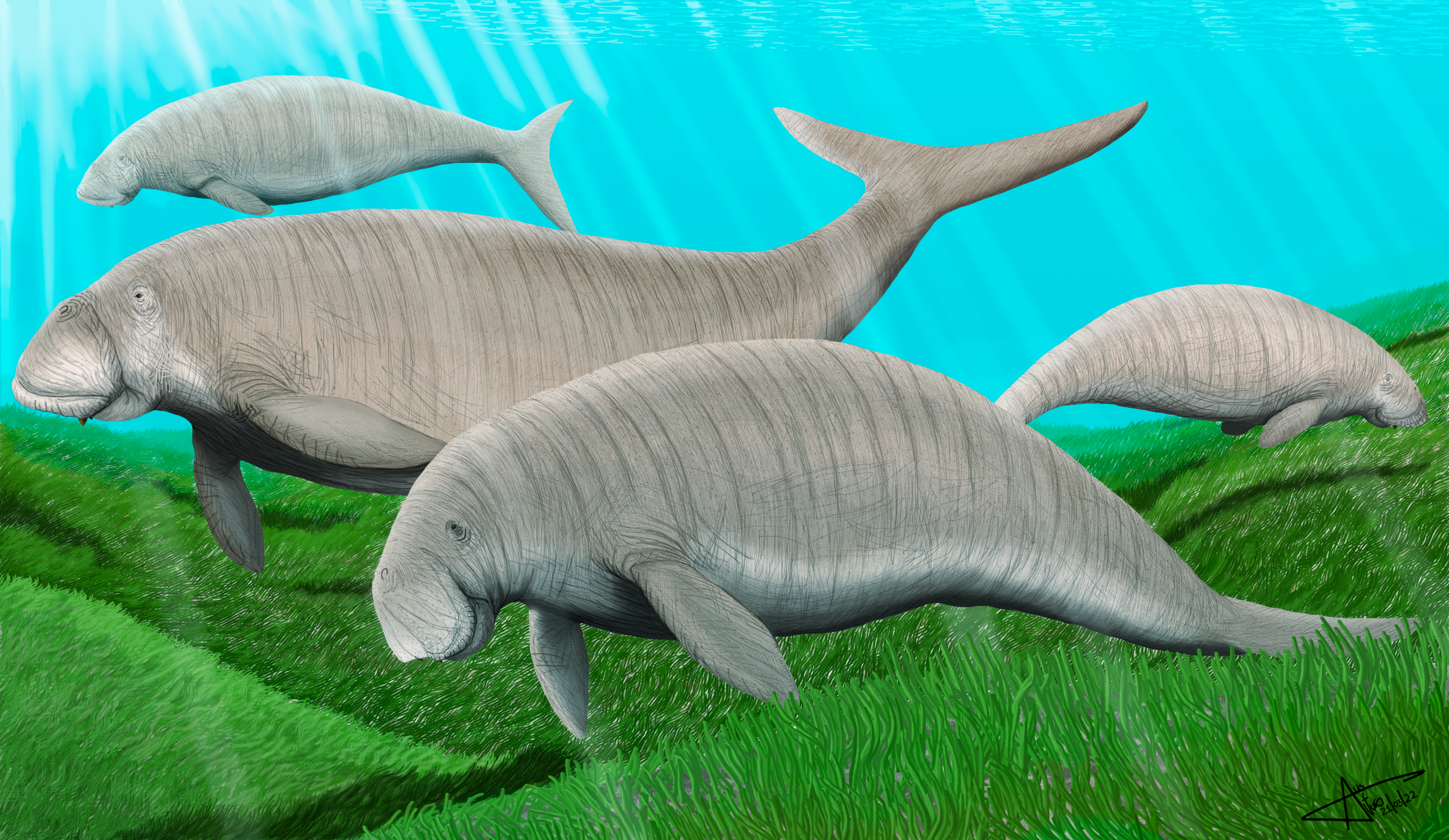HOME | DD
 LADAlbarran2001 — Corystosiren varguezi
LADAlbarran2001 — Corystosiren varguezi

#draw #drawing #dugong #mammals #marinemammal #paleoart #prehistoric #pliocene #corystosiren #corystosirenvarguezi
Published: 2022-03-21 06:25:06 +0000 UTC; Views: 9071; Favourites: 181; Downloads: 11
Redirect to original
Description
Corystosiren varguezi fue un antiguo sirenio dugongo descrito en 1990, cuyo holotipo fue encontrado 1986 en la Formación Carrillo Puerto en Rancho Chapas en el estado de Yucatán, México, aunque también se tiene material fragmentario proveniente de Bone Valley en Florida, USA. Los restos del holotipo constan de un cráneo casi completo de un ejemplar juvenil, mientras que restos fragmentarios de los dientes y cráneo fueron reportados en Florida, todos los restos pertenecen muy posiblemente al Plioceno temprano, ya que en ese entonces sin grandes glaciares en los extremos polares de la tierra las aguas marinas se encontraban más tierra adentro de lo que están hoy en día, por lo cual estos animales habitaron en mares poco profundos de aquel entonces, junto a otras criaturas como tiburones (Carcharodon megalodon, Isurus hastalis, Galeocerdo rosaliensis, Carcharhinus leucas) encontrados en la misma Formación. Pertenecía a la familia Rytiodontidae, donde se encuentra el género Rytiodus del Mioceno de Europa, otro sirenio con grandes piezas dentales, su posible pariente más cercano, y ambos las empleaban para arrancar los pastos marinos de los cuales se alimentaban, manteniéndolos constantemente afilados.Corystosiren varguezi was an ancient dugong sirenian described in 1990, whose holotype was found in 1986 in the Carrillo Puerto Formation in Rancho Chapas in the state of Yucatán, Mexico, although there is also fragmentary material from Bone Valley in Florida, USA. The holotype remains consist of an almost complete skull of a juvenile specimen, while fragmentary remains of the teeth and skull were reported in Florida, all the remains very possibly belong to the early Pliocene, since at that time without large polar icebergs in the ends of the earth, marine waters were further inland than they are today, which is why these animals lived in shallow seas back then, along with other creatures such as sharks (Carcharodon megalodon, Isurus hastalis, Galeocerdo rosaliensis, Carcharhinus leucas) found in the same Formation. It belonged to the family Rytiodontidae, where the genus Rytiodus from the Miocene of Europe is found, another sirenian with large tusks, its possible closest relative, and both used them to uproot the seagrasses on which they fed, keeping them constantly sharp.
Related content
Comments: 5

👍: 0 ⏩: 1

👍: 1 ⏩: 1

👍: 0 ⏩: 0

👍: 1 ⏩: 1

👍: 0 ⏩: 0
























